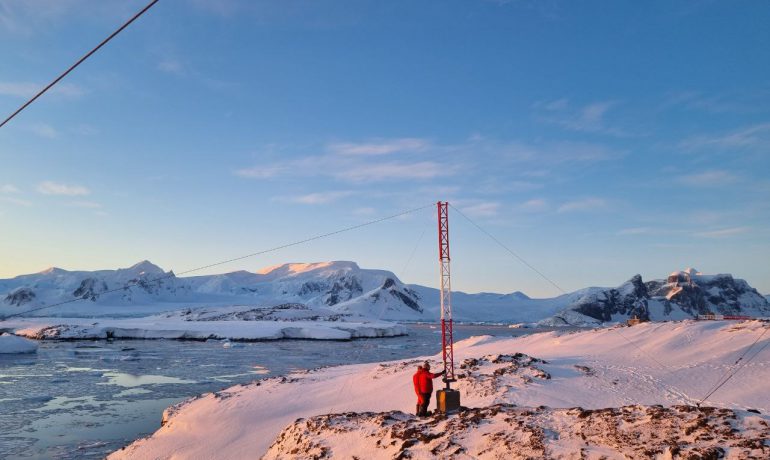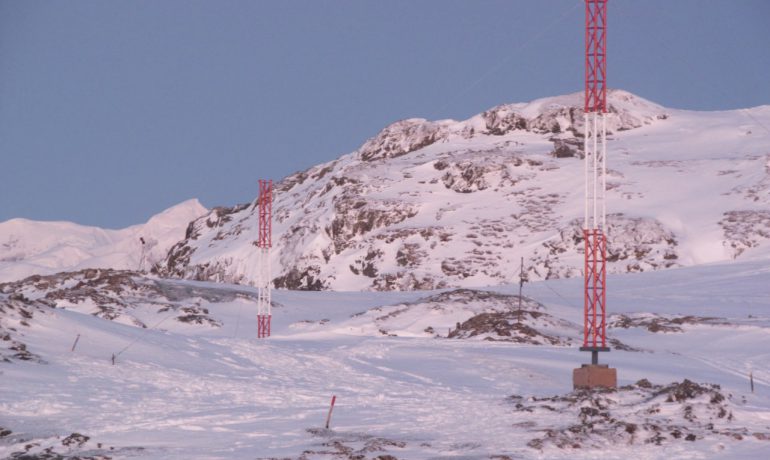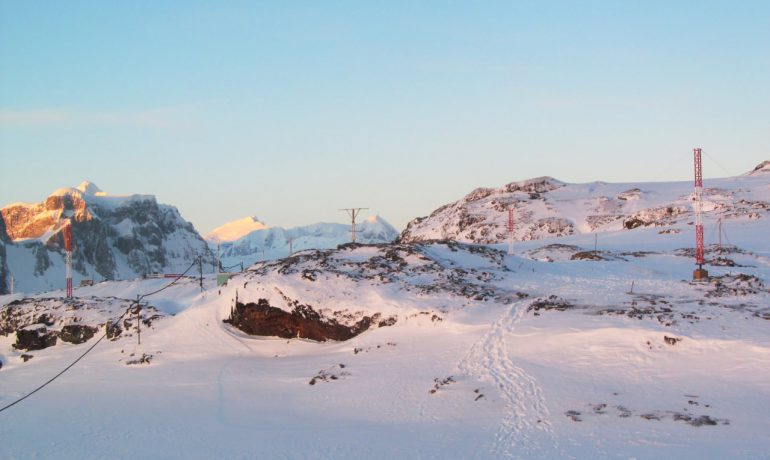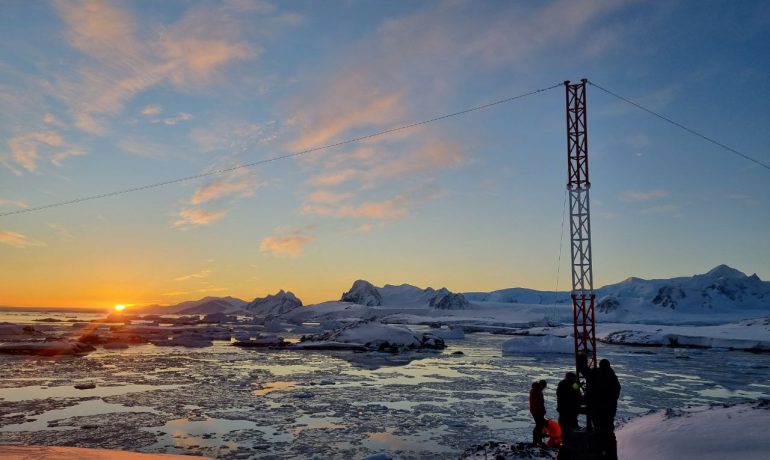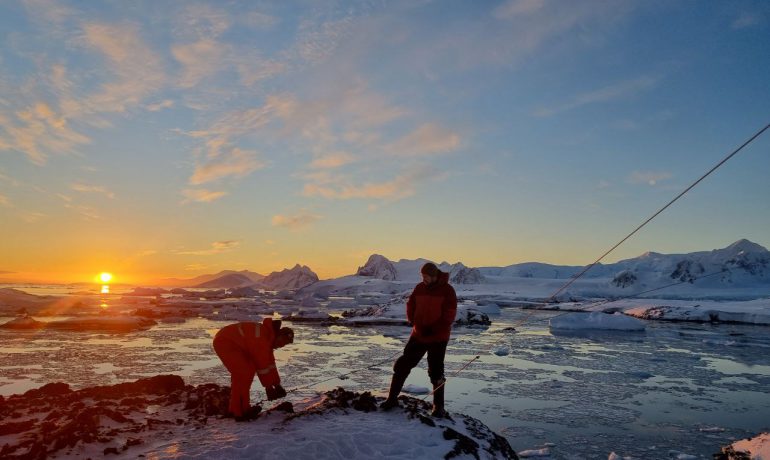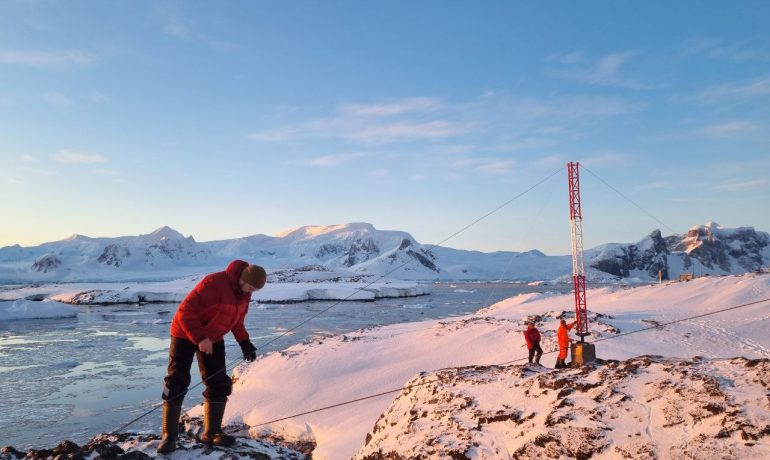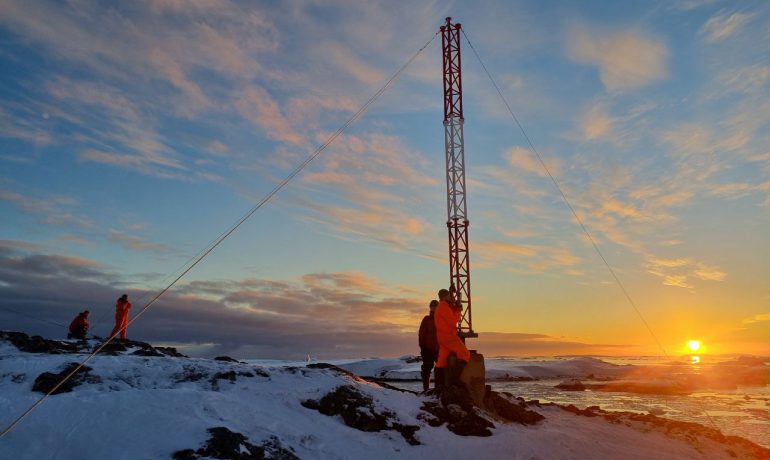For almost three decades Ukrainian scientists have been exploring geospace, that is, near-Earth space at Akademik Vernadsky station. One of the widely used methods of geospace research in the world is vertical sounding of the ionosphere – part of the atmosphere “charged” with ions and electrons, extending at altitudes of about 50-1500 km from the Earth’s surface.
Data during vertical sounding are obtained using special radars – ionosondes. The interpretation of these data makes it possible to obtain new knowledge about seasonal and daily variations of the parameters of the plasma medium, to study the manifestations of magnetic storms, disturbances and wave processes in it. This is important both from the point of view of understanding the ionosphere, and for purely practical reasons. For example, plasma instabilities and inhomogeneities arising in this layer complicate the operation of ground-space systems.
There are more than 100 ionosondes in the world, but there are few of them in the Southern Hemisphere, and on the Antarctic Peninsula a regular vertical sounding is carried out only at our station (since the second half of the 1950s, that is, when it still belonged to Great Britain and had the name “Faraday”). In addition to the Australian-made IPS-42 ionosonde, which has been continuously operating since 1982, a modern digital ionosonde developed by scientists from Ukraine is also used at Vernadsky. Antenna system of ionosondes consists of four rhombuses (two for signal transmission and two for reception).
To improve the information content of the data, another digital ionosonde operating in passive mode was installed near the main buildings of the station. Currently, it uses two perpendicular dipoles, which allows separating waves of different polarizations reflected from the ionosphere (so-called magnetoionic components). By the way, a similar dipole was used for radiophysical experiments during the transition of the Noosfera research vessel from Odesa to Vernadsky.
In March of this year, installation of new rhombic antennas began near the station. The point is that for better reception of signals, it is necessary that the dimensions of the antennas be of the same order as the length of the received radio waves, and this is tens of meters.
Mast sections for the construction of antennas arrived on the RV Noosfera from Ukraine, the foundation was poured under them and, as soon as the opportunity allowed, the participants of the 27th UAE began the installation of these masts.
Not only geophysicists but also meteorologists, biologists, a system mechanic, a system administrator, base commander, and even doctor took part in the work. Often, they had to work in extreme conditions – when the wind speed reached 30 m/s with wet snow on the wires. But so far, the team has already managed to install three masts out of five. There is still a lot of work to be done, but it is worth it, because thanks to this, our scientists will be able to obtain new world-class scientific results and expand human knowledge about our planet.
We thank Oleksandr Bogomaz, the geophysicist of the 27th UAE, for the information.
Photo: Vasyl Matkovskyi and Oleksandr Bogomaz


